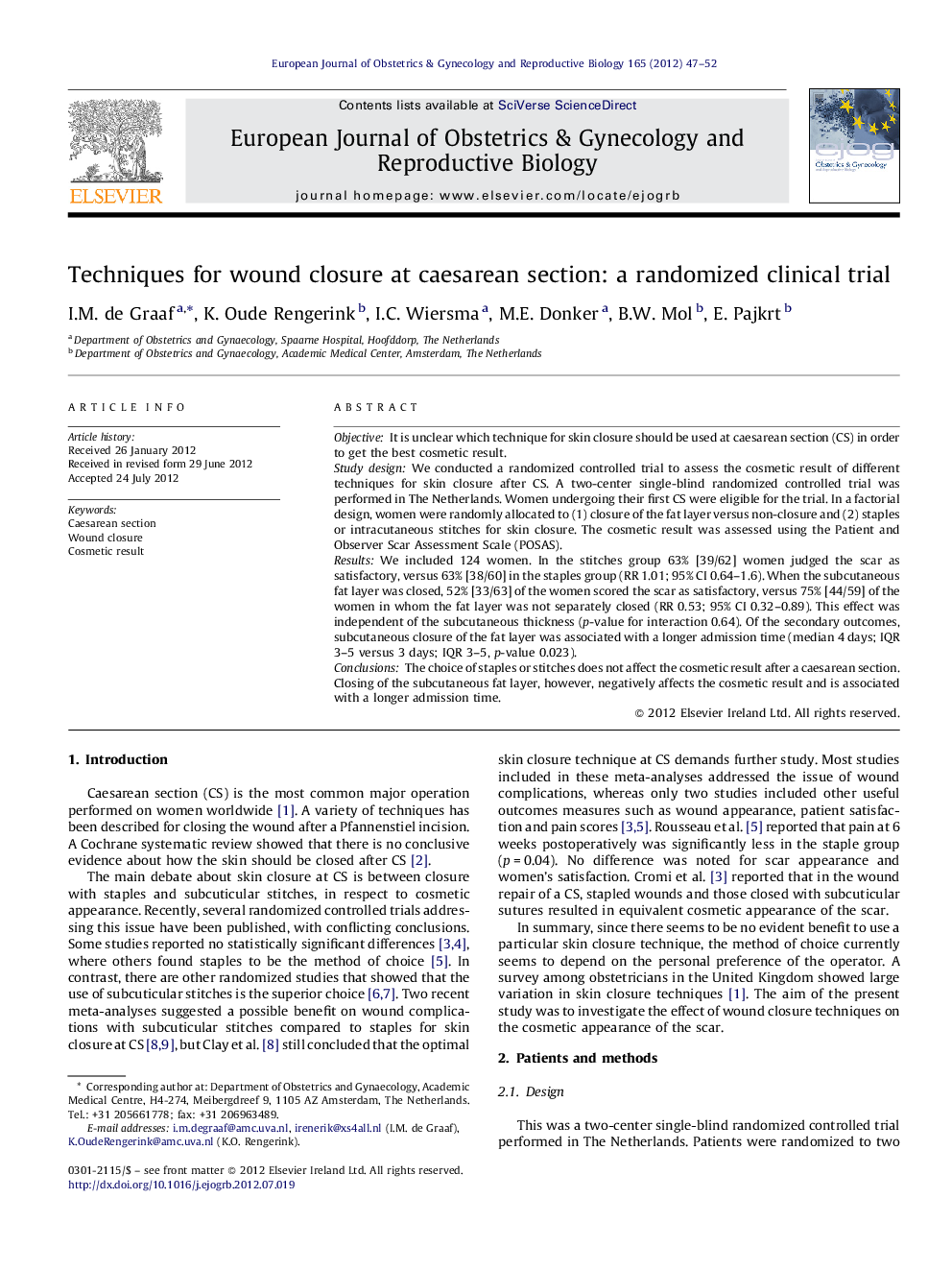| کد مقاله | کد نشریه | سال انتشار | مقاله انگلیسی | نسخه تمام متن |
|---|---|---|---|---|
| 3920249 | 1599823 | 2012 | 6 صفحه PDF | دانلود رایگان |

ObjectiveIt is unclear which technique for skin closure should be used at caesarean section (CS) in order to get the best cosmetic result.Study designWe conducted a randomized controlled trial to assess the cosmetic result of different techniques for skin closure after CS. A two-center single-blind randomized controlled trial was performed in The Netherlands. Women undergoing their first CS were eligible for the trial. In a factorial design, women were randomly allocated to (1) closure of the fat layer versus non-closure and (2) staples or intracutaneous stitches for skin closure. The cosmetic result was assessed using the Patient and Observer Scar Assessment Scale (POSAS).ResultsWe included 124 women. In the stitches group 63% [39/62] women judged the scar as satisfactory, versus 63% [38/60] in the staples group (RR 1.01; 95% CI 0.64–1.6). When the subcutaneous fat layer was closed, 52% [33/63] of the women scored the scar as satisfactory, versus 75% [44/59] of the women in whom the fat layer was not separately closed (RR 0.53; 95% CI 0.32–0.89). This effect was independent of the subcutaneous thickness (p-value for interaction 0.64). Of the secondary outcomes, subcutaneous closure of the fat layer was associated with a longer admission time (median 4 days; IQR 3–5 versus 3 days; IQR 3–5, p-value 0.023).ConclusionsThe choice of staples or stitches does not affect the cosmetic result after a caesarean section. Closing of the subcutaneous fat layer, however, negatively affects the cosmetic result and is associated with a longer admission time.
Journal: European Journal of Obstetrics & Gynecology and Reproductive Biology - Volume 165, Issue 1, November 2012, Pages 47–52